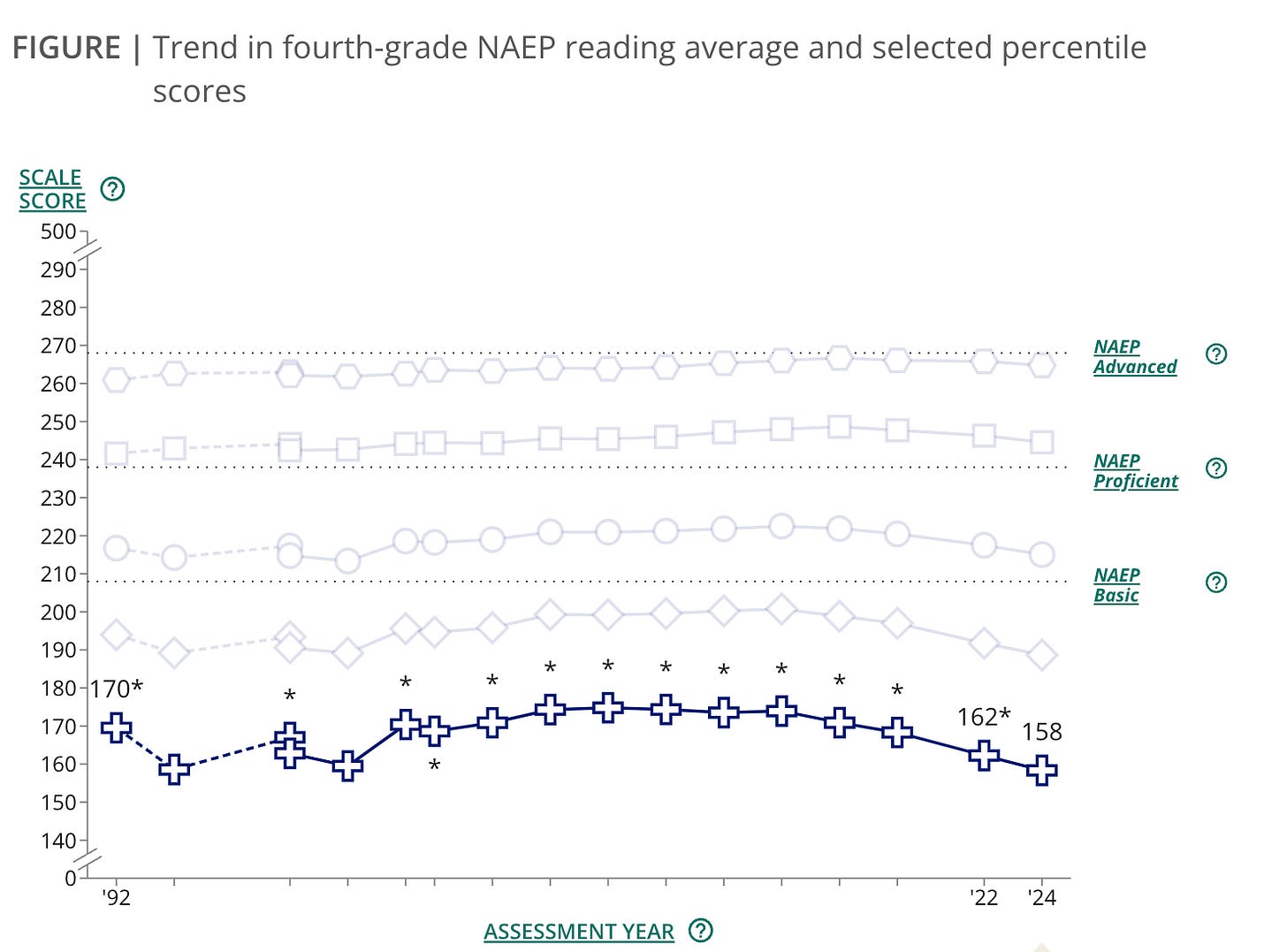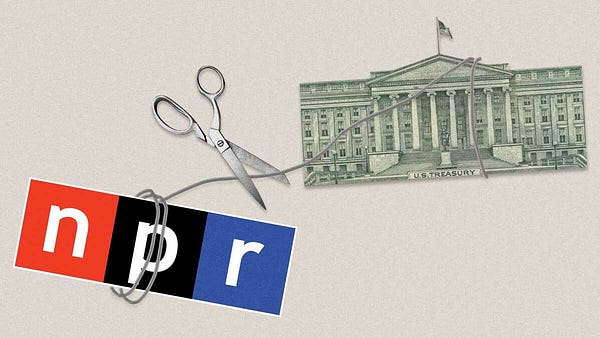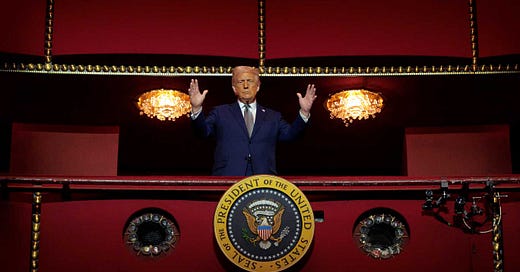
Since its creation in 1979, the Department of Education has sent well more than $1 trillion to schools with the express purpose of closing the gaps between the highest and lowest performers. Today, those gaps are as wide as they have ever been, and by many measures, even wider.
Last week, the latest Nation’s Report Card came out, giving us a clear assessment of where student achievement stands. The report, published by the National Assessment of Educational Progress (NAEP), tells us that in reading and math, most students were even further behind than they were in 2022. Which was worse than where they were in 2019. Which was worse than 2013.
How bad is it? Seven in 10 American fourth graders are not proficient readers, meaning they struggle with reading grade-level literature and comprehending informational texts. Forty percent graded out at “below basic,” meaning they struggle with basic comprehension. In math, the picture is similar: six in 10 fourth graders are behind in math.
The gap between the highest and lowest performers has grown by 10 percent since 2019. Don’t be fooled into believing this is a Covid-19 by-product. The lowest performing eighth-grade readers are significantly worse off than their peers were in 1992, the first year the NAEP was administered. In fact, their scores this year are the lowest in recorded history:
Consider this “Exhibit A” as to why the Department has failed at its mission and no longer needs to exist.
I can understand how that idea, which President Donald Trump is committed to advancing, might sound a bit radical. But having spent four years on the inside as secretary of education, struggling to get the department’s bureaucracy to make even the smallest changes to put the needs of students first, I can say conclusively that American students will be better off without.
Nothing could be more important to our success as a nation than having well-educated citizens. But don’t be fooled by the name: the Department of Education has almost nothing to do with actually educating anyone.
The Department of Education does not run a single school. It does not employ any teachers in a single classroom. It doesn’t set academic standards or curriculum. It isn’t even the primary funder of education—quite the opposite. In most states, the federal government represents less than 10 percent of K–12 public education funding.
So what does it do? It shuffles money around; adds unnecessary requirements and political agendas via its grants; and then passes the buck when it comes time to assess if any of that adds value.
Here’s how it works: Congress appropriates funding for education; last year, it totaled nearly $80 billion. The department’s bureaucrats take in those billions, add strings and red tape, peel off a percentage to pay for themselves, and then send it down to state education agencies. Many of them do a version of the same and then send it to our schools. The schools must then pay first for administrators to manage all the requirements that have been added along the way. After all that, the money makes it to the classroom to help a student learn—maybe.
In other words, the Department of Education is functionally a middleman. And like most middlemen, it doesn’t add value. It merely adds cost and complexity.














